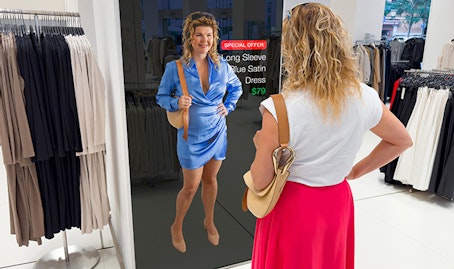Perspectives

Working with experts and influencers continues to be a valued piece of the modern marketing puzzle for brands who seek to reach, engage and, ultimately, boost sales.
There are now millions of social media superstars talking about everything from fashion and lifestyle to wellbeing and gaming, and even the emergence of AI influencers.
As consumers spend more of their lives on social media, the amount of money companies are paying influencers is rocketing. The global influencer marketing market has more than tripled since 2019 and is estimated (by Statista) to reach a record spend of US $39.3 billion by 2025.
Sharing details of their day-to-day experiences with anything from fashion, beauty, health and wellness to gaming, some influencers have become as trusted as friends and family for information and entertainment. In a landscape moving at speed measurement can be a challenge.
In this month’s blog Hall & Partners’ Suzanne Carbonell and Fatima Al-Toma share some strategic insights and useful guidelines that will be relevant for both marketers already working with influencers but unsure of the value they are deriving, as well as marketers about to embark on the influencer partnership journey.
They look at how influencers, whether they are micro-users, celebrities, Tik Tokers, YouTubers, or social tastemakers, can ignite brand affinity and growth in a meaningful and authentic way. They also cover how to measure the impact of these engagements so that you can identify the partnerships that drive business growth.
So that you can pinpoint exactly how influencers are changing buyer journeys – from awareness through to where they have the strongest pull in the sales funnel and right up to the point of purchase – we’ve looked at this in the context of our strategic growth framework: See, Feel, Think, Do.
Setting clear influencer marketing objectives
Before you begin engaging with influencers, it is important to decide the goal of your partnerships. What behavioural changes are you looking for? If your aim is to increase brand awareness, potentially a change in feelings and perceptions of your brand, ultimately to drive sales. Your influencer partnerships should drive some sort of action or behavior.
Being seen: the right influencers can be amplifiers of brand visibility
There is no doubt that influencers, often with millions of followers watching how they integrate products into their daily lives, can increase brand awareness and salience, creating stickiness, buzz and momentum for your brand.
Yet with the number of influencers on the scene growing exponentially, particularly in the areas that are important to people such as health and wellbeing, it’s important to ensure that you want their audience. If their followers are not your target audience, you could be wasting valuable time and budget.
Finding influencers who will create stickiness for your brand through their authenticity as a regular person could be a more effective partnership than celebrity influencers with millions of followers. If the brand isn’t being used authentically as a solution to their daily lives or problems, it can be difficult to achieve cut through.
An influencer charting their wellbeing journey for example can be more engaging and are more likely to share their own thoughts and ask questions as part of the community. This can be a more authentic partnership for brands.
At the same time don’t ignore the potential risks of the association that some brand partnerships could bring.
The Netflix docuseries, The Search For Instagram’s Worst Con Artist, tracks the rise and fall of Belle Gibson, an Australian diagnosed with terminal brain cancer and given only four months to live but who miraculously survived for years claiming due to her healthy diet and lifestyle. As her popularity (and net worth) soared, she became an overnight success and a hero to many living with cancer. Except every part of Gibson’s story was based on lies.
Brands need to avoid being associated with influencers and their wrongdoings.
Feel: Supercharging the emotional connection to your brand through influencer marketing
A crucial pillar of your desired action will be to ensure that the influencer’s communications make consumers feel something.
There are many ways that brands create positive, emotional connections with customers, including ad campaigns that tap into nostalgia, happiness, or humour for example. Working with an influencer creates another link in the supply chain between brand and consumer. Yet while you may feel one step removed by relying on the influencer’s ability to evoke these emotions for your brand – in the way they are using and talking about your brand – it is also a powerful brand endorsement and can supercharge emotional connections.
Fostering a community is a key aspect of this engagement. Brands should focus on looking at how shared values can align with these communications, creating stronger emotional connections with the brand.
This is particularly true when the brand or product is completely aligned with that group or community of followers. We see this a lot with health, wellness, or beauty products. Some of the brands in these categories have such a loyal following of consumers who are passionate in how they talk about it and recommend it, that the brand goes from being endorsed to being something the community of followers want to try and even use regularly.
Thinking about your brand: align partnerships with your brand values
Popularity is only one part of the influencer outreach puzzle. How do you want the influencer and their followers to think about your brand? The strength of that ‘fit’ should either align with your current brand values, or with the brand perception you want to establish in the future.
While most influencers are pretty good at being real, there is a fine line between partnerships that are authentic, have a brand purpose, and are forced. The last thing you want is for consumers to feel that they are being sold to. The influencer has to make people think about the brand by conveying meaningful brand benefits in a relevant way to them.
For example, would an endorsement for the online pet store Chewy be better coming from a random celebrity with a dog, or an influencer known for being passionate about rescuing animals and making them feel cared for medically or loved? Ideally, the influencer’s values should align with Chewy’s offering of affordable alternatives to pet medication and their mission to get supplies to you quickly and send you flowers when a pet is lost due to illness or accident.
Your brand needs to fit seamlessly within the values of the influencer as well as the content they share and the stories they’re telling. Think about whether your brand solves a consumer need that the influencer would have followed in their day-to-day lives or whether its benefits address something that doesn’t feel like an authentic fit. For example, ‘at home’ cook Clare Thomson, aka @5oclockapron, is regularly seen with no make-up and kids on the scene in her busy, bustling home kitchen. She would not be likely to feature a lipstick brand on her socials that has nothing to do with beauty.
Done right, a recommendation or affiliation from an influencer could be as impactful as a friend recommending a brand to you. Choosing influencers whose values align with the values of your brand and target customers is crucial.
Do: Are people doing what you intended?
Looking back to the original desired outcomes, you should be able to measure the effectiveness of influencer marketing. If the goal was to increase sales, for example, then the use of promo codes, discounts and direct calls to action should be visible in both short- and long-term sales figures.
You might also want to measure the impact that influencers had on amplifying other marketing communications. Were any retail channels more positively impacted than others? Was there a particular influencer or single influencer post that drove more interest, awareness or sales?
Unpacking how these content creators and community engagers impact brand reach and effectiveness compared to other marketing and brand activities is essential, but it’s not always easily identifiable.
To properly assess whether the chosen group of influencers is working for your brand you can look at a range of metrics such as whether you’ve seen an increased number of followers; a rise in positive consumer sentiment in your brand tracking; or even more positive mentions in social conversations. These are all metrics that can shape effectiveness measurement of influencer marketing.
Within brand tracking, we can apply advanced analytics to understand the extent that consumer exposure to influencer content is truly impacting brand KPIs. Linguistics analysis can also be expanded to incorporate additional metrics such as a map and size of social media chatter about relevant topics. With this you can dive deep into themes that have surfaced pre and post influencer engagement.
If your objective was eliciting a call to action, you can isolate the impact that influencer marketing promo codes or hashtags had on driving new followers to the brand web site. If brand awareness was the goal, then looking at the increase in social and website traffic can be a useful metric.
Measuring against original objectives at the same time as isolating the impact that other marketing programmes have had will ensure that you can continue to refine and improve the way that influencers support your brand growth objectives.
Meet our authors
Suzanne Carbonell, Partner, Hall & Partners
Fatima Al-Toma, Group Strategy Director, Hall & Partners
Talk to our team of experts
Learn how we can deliver actionable insights and creativity to drive brand growth.








